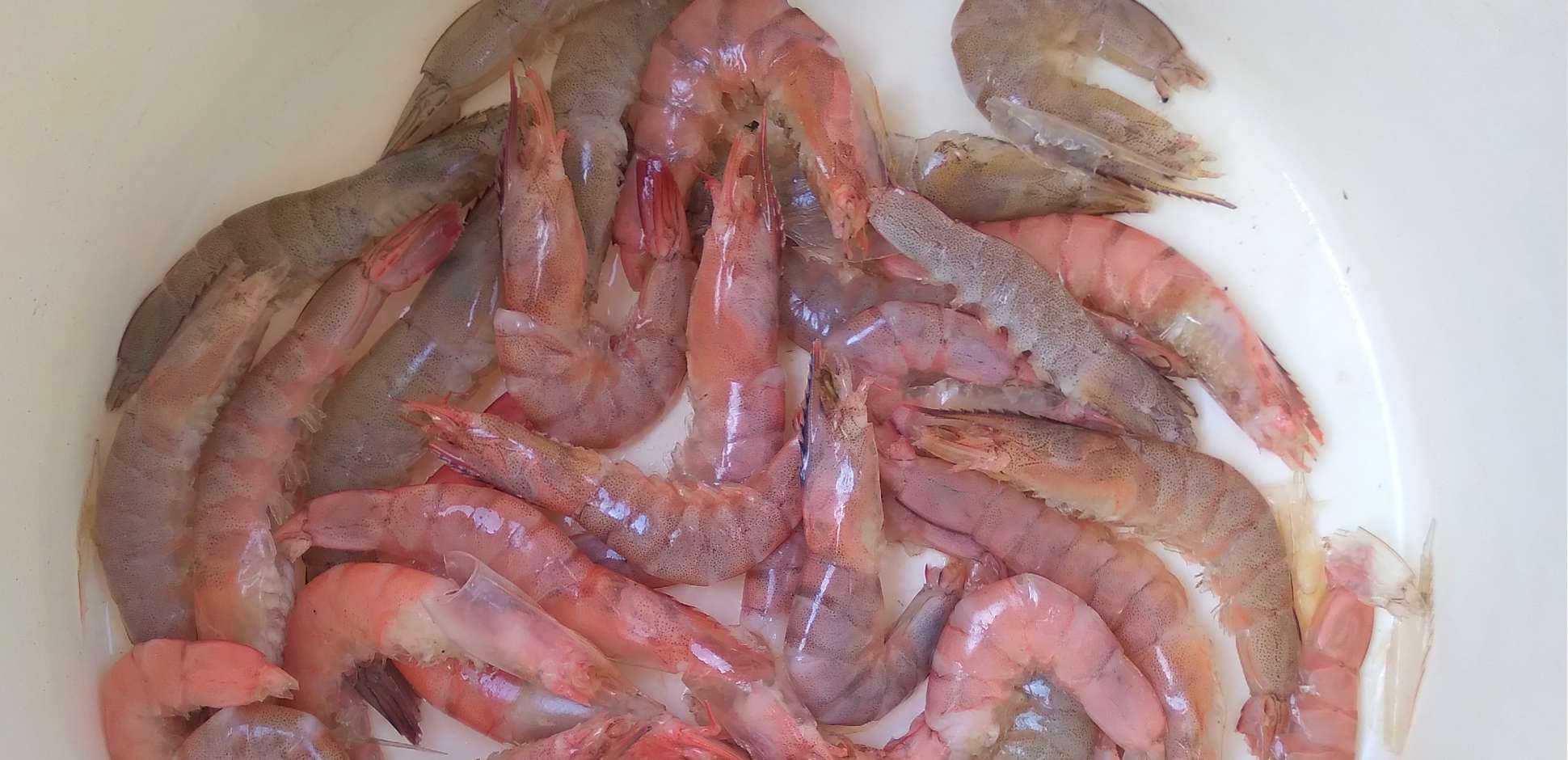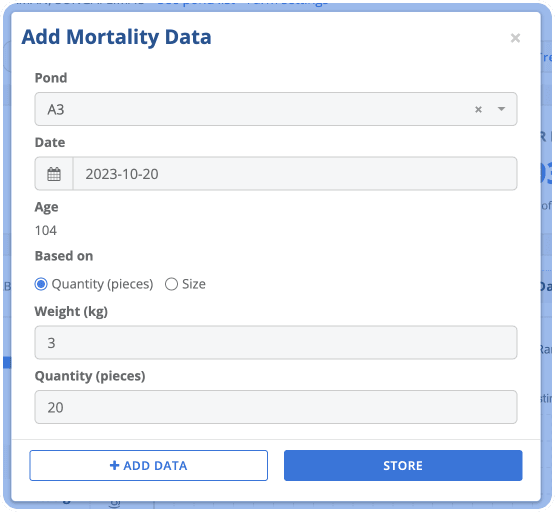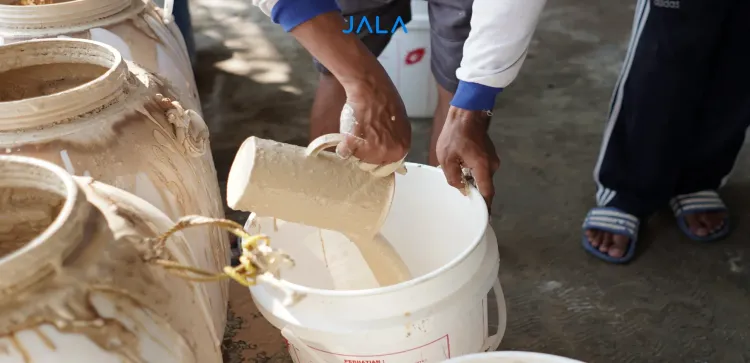
In shrimp farming, various parameters need to be regularly recorded, such as water temperature, pH, dissolved oxygen (DO), feed amount, and shrimp growth. These parameters are valuable data that can reflect the quality of cultivation. However, there is one parameter that is often overlooked by farmers, which is shrimp mortality. Shrimp mortality can provide insightful information for farmers and should be well-documented.
The Importance of Recording Shrimp Mortality
Recording shrimp mortality is important because it can provide insights into the pond's condition. For instance, the mortality rate can indicate the presence of diseases in the pond. Some diseases, like white feces disease caused by the Vibrio bacteria, can result in mass shrimp mortality.
There are various approaches that farmers can use to calculate and record shrimp mortality. Some farmers choose to calculate based on the weight and size of the shrimp, while others prefer to calculate based on weight and the number of shrimp.
When is Mortality Rate a Concern?
According to The Fish Site, the ideal survival rate (SR) in shrimp ponds is considered to be 80-90%, although in reality, many ponds in Indonesia only achieve SRs of 70-80%. If the recorded mortality rates lead to an SR below these values, farmers need to be aware about potential shrimp diseases in the pond.
For example, diseases like White Spot Disease (WSD) are characterized by a rapid and high increase in mortality as the WSSV virus infects ectodermal and mesodermal tissue cells (Lilisuriani, 2020). However, this increase in mortality often occurs when the disease has reached a severe stage, around DoC 49, where many shrimp has died at the bottom of the pond. Infected shrimp also appear weak, lose their appetite, may have missing or damaged organs, pale skin, and a soft texture (Hamzah et al., 2022).
What to Do When the Mortality Rate is High?
If the recorded mortality rate becomes a concern, farmers can perform lab tests to confirm the presence of diseases in their ponds. If any shrimp are already infected, it is advisable to remove or destroy all the shrimp in one pond and clean the pond to prevent the disease from spreading to other ponds. Drying and disinfection are carried out to prevent the disease from re-emerging in the following cycles.
How to Prevent High Mortality Rates?
To prevent high mortality rates, farmers can take several actions, including:
1. Reducing feed during rainy season During rainy season or when the weather is cold, shrimp metabolism tends to decrease, leading to reduced feed consumption. Accumulated uneaten feed in the pond are decomposed to ammonia, which is toxic and can increase shrimp mortality. Excess rainwater should also be removed promptly to prevent a drastic drop in salinity.
2. Monitoring pond water quality Poor water quality management threatens shrimp ponds. Water quality should be regularly monitored by measuring parameters such as temperature, pH, DO, and salinity. Good water quality management includes monitoring environmental conditions, water sources, treatment, and the entry and exit of farm staff in and out of the location. Regularly changing pond water is also recommended, as water may become contaminated with various substances, such as leftover feed, dead plankton, treatment residues, and shrimp feces.
3. Paying attention to shrimp nutritional needs Shrimp have different nutritional needs depending on their age, including feed, vitamins, and supplements. Feed consumption is a crucial factor that determines shrimp growth and survival. Simultaneously, overfeeding can lead to problems. Excess feed in the pond can lead to increased anaerobic decomposition, producing toxic compounds like ammonia. Anaerobic conditions reduce shrimp appetite, increasing the risk of mortality.
Record shrimp mortality on JALA App!
Farmers no longer need to manually record shrimp mortality. JALA App facilitates farmers with the "Input Mortality Data Based on Number of Shrimp or Size." This feature makes it easier for farmers to use shrimp mortality data as the basis for survival rate projections.

To use this feature, farmers can select the "Mortality" tab on the JALA App Web homepage, then select the pond, date, and the number of mortality by choosing either the number of shrimp or size.
Recording mortality data will also affect SR. Any corrections on SR will automatically adjust the daily feed prediction shown on JALA App, enabling farmers to have a more accurate feed record.
Well-documented mortality data can provide information about the pond's condition. If shrimp mortality rates are on the rise, farmers can make the best decisions to address the issue, ensuring sustainable and productive farming in the future. Start farming more efficiently with JALA App. It's free!
Resources: https://thefishsite.com/articles/the-circular-economy-why-indonesian-shrimp-farmers-are-changing-the-shape-of-their-ponds Bachruddin, M., et al. "Effect of probiotic culture water on growth, mortality, and feed conversion ratio of Vaname shrimp (Litopenaeus vannamei Boone)." IOP Conference Series: Earth and Environmental Science. Vol. 137. IOP Publishing, 2018. Hamzah, et al. “Pola Serangan Penyakit Komplikasi EHP dan WSSV Pada Litopenaeus vannamei di Tambak Intensif” Prosiding Simposium Nasional IX Kelautan dan Perikanan, Fakultas Ilmu Kelautan dan Perikanan, Universitas Hasanuddin, Makassar, 2022 Lilisuriani. "Serangan Penyakit Virus Pada Udang Di Tambak Tanpa Memperlihatkan Gejala Klinis." Octopus: Jurnal Ilmu Perikanan 9.1 (2020): 25-32.





